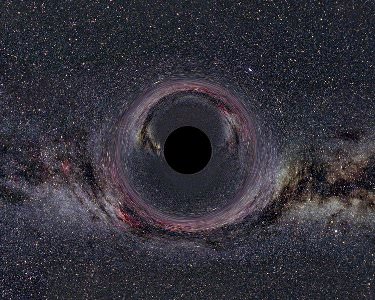As astronomers began working out how stars die, they expected that the mass of remnants, whether white dwarfs, neutron stars, or black holes, should be essentially continuous. In other words, there should be a smooth distribution of remnant masses from a fraction of a solar mass, up to nearly 100 times the mass of the sun. Yet observations have shown a distinct lack of objects at the borderline of neutron stars and black holes weighing 2-5 solar masses. So where have they all gone and what might this imply about the explosions that create such objects?
The gap was first noted in 1998 and was originally attributed to a lack of observations of black holes at the time. But in the past 13 years, the gap has held up.
In an attempt to explain this, a new study has been conducted by a team of astronomers led by Krzystof Belczynski at Warsaw University. Following the recent observations, the team assumed the paucity was not caused by a lack of observations or selection effect, but rather, there simply weren’t many objects in this mass range.
Instead, the team looked at the engines of supernovae that would create such objects. Stars less than ~20 solar masses are expected to explode into supernovae, leaving behind neutron stars, while ones greater than 40 solar masses should collapse directly into black holes with little to no fanfare. Stars between these ranges were expected to fill this gap of 2-5 solar mass remnants.
The new study proposes that the gap is created by a fickle switch in the supernova explosion process. In general, supernovae occur when the cores are filled with iron which can no longer create energy through fusion. When this happens, the pressure supporting the star’s mass disappears and the outer layers collapse onto the immensely dense core. This creates a shockwave which is reflected by the core and rushes outwards, slamming into more collapsing material and creates a stalemate, where the outwards pressure balances the infalling material. For the supernova to proceed, that outwards shockwave needs an extra boost.
While astronomers disagree on exactly what might cause this revitalization, some suggest that it is generated as the core, superheated to hundreds of billions of degrees, emits neutrinos. Under normal densities, these particles travel right past most matter, but in the superdense regions inside the supernova, many are captured, reheating the material and driving the shockwave back out to create the event we observe as a supernova.
Regardless of what causes it, the team suggests that this point is critical for the final mass of the object. If it explodes, much of the mass of the progenitor will be lost, pushing it towards a neutron star. If it fails to push outwards, the material collapses and enters the event horizon, piling on mass and driving the final mass upwards. It’s an all or nothing moment.
And moment is a good description of how fast this occurs. At most, astronomers suggest that this interplay between the outwards shock and the inwards collapse takes a single second. Other models place the timescale at a tenth of a second. The new study notes that the more quickly the decision takes place, the more pronounced the gap is in the resulting objects. As such, the fact that the gap exists may be taken as evidence for this being a split second decision.
Source: Universe Today

No hay comentarios:
Publicar un comentario